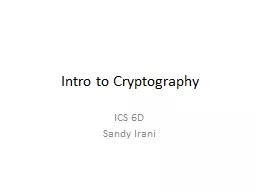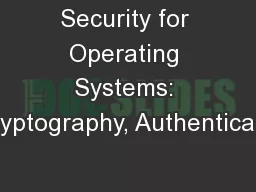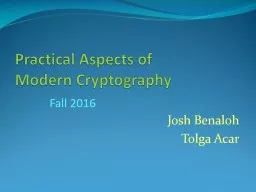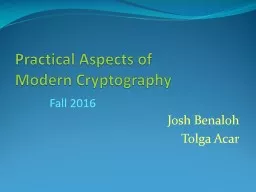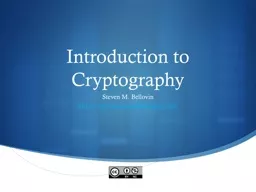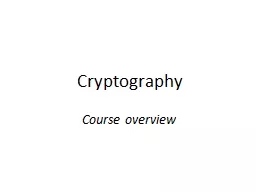PPT-Intro to Cryptography
Author : yoshiko-marsland | Published Date : 2017-04-07
ICS 6D Sandy Irani Cryptography Intro Alice wants to send a message to Bob so that even if Eve can see the transmitted information she does not learn the true message
Presentation Embed Code
Download Presentation
Download Presentation The PPT/PDF document "Intro to Cryptography" is the property of its rightful owner. Permission is granted to download and print the materials on this website for personal, non-commercial use only, and to display it on your personal computer provided you do not modify the materials and that you retain all copyright notices contained in the materials. By downloading content from our website, you accept the terms of this agreement.
Intro to Cryptography: Transcript
Download Rules Of Document
"Intro to Cryptography"The content belongs to its owner. You may download and print it for personal use, without modification, and keep all copyright notices. By downloading, you agree to these terms.
Related Documents

